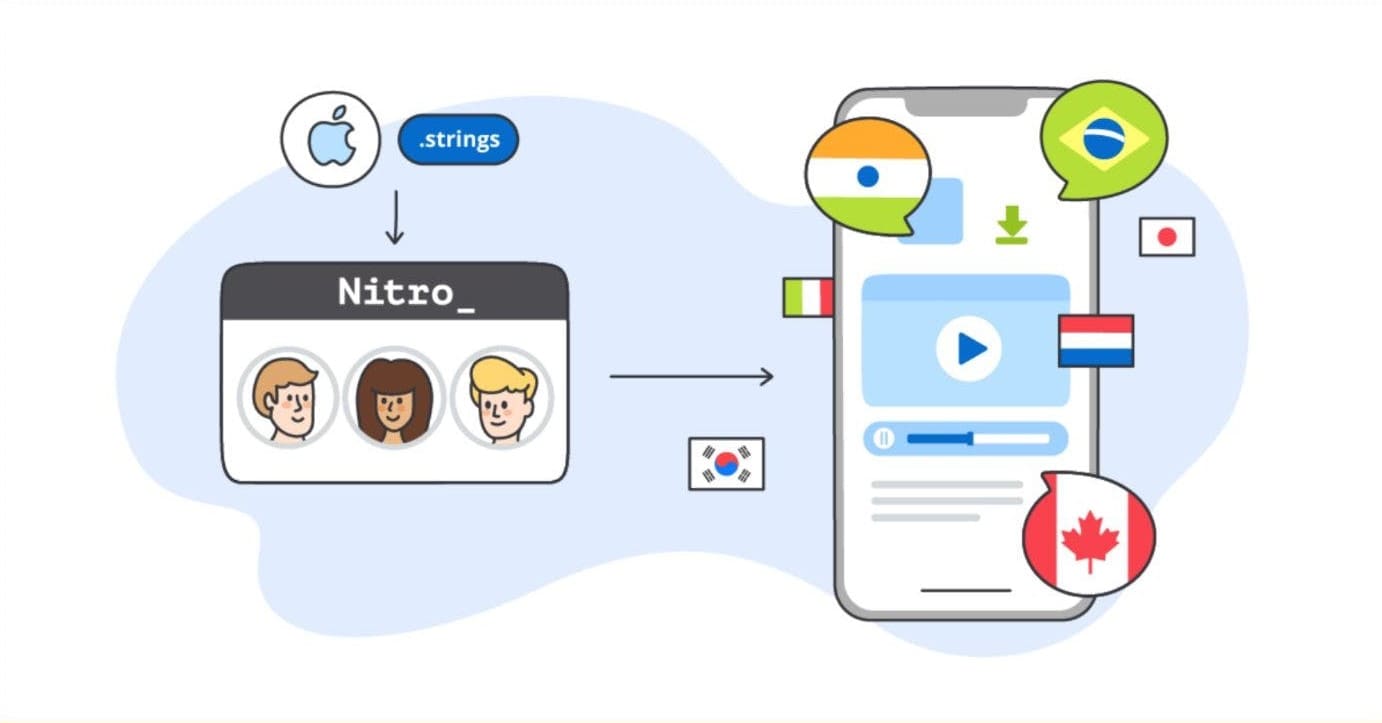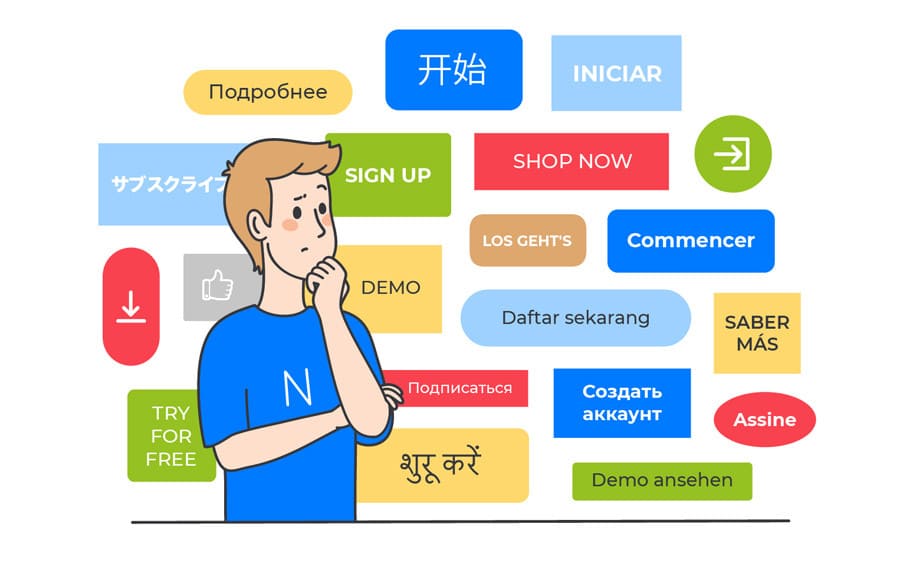The global games market is flourishing, and expanding your audience to include international users is the simplest way to boost both traffic and revenue.
So game localization is the way to go, but how many languages should you localize your game into? Which languages should you start with?
In this article, here at game localization company Alconost we’ll be covering these topics and revealing new untapped markets.
Most popular languages for game localization
Right now the most frequently selected languages for game localization at Alconost are Spanish, German, French, Simplified Chinese, Japanese, Brazilian Portuguese, Italian, Korean, Russian, and Polish.
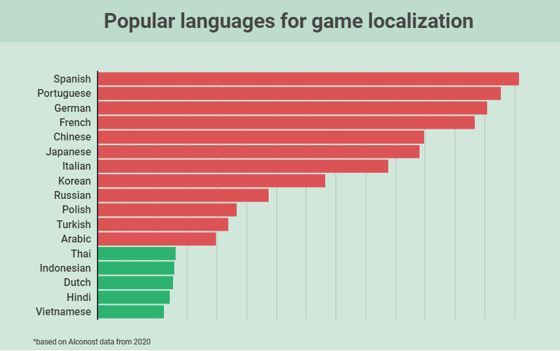
These 17 languages account for 84% of game localization orders at Alconost. For Portuguese, Brazilian Portuguese is the most commonly selected dialect; for Chinese, Simplified Chinese is the most common.
However, Indonesian, Thai, Hindi, and Vietnamese are swiftly gaining ground, and we expect these languages to become popular in the coming years, given the growth prospects for the games market in South Asia and the Pacific.
Before making any decisions about game localization, it’s best to analyze several aspects:
- What countries is your game genre most popular in?
- What is most important to you right now — maximum downloads or maximum revenue?
- How many languages will your budget allow, given the volume of text in the game?
Top 10 countries for gaming revenue
First off, let’s analyze localization languages from the perspective of return on investment (ROI). Here’s a list of the top 10 countries for gaming revenue (please note that the below list is current as of the publication date and may slightly differ from the Newzoo stats which are updated regularly):
- China
- USA
- Japan
- South Korea
- Germany
- UK
- France
- Canada
- Italy
- Spain
This list has been pretty consistent for quite a while, so it’s not surprising that a lot of game developers start with FIGS (French, Italian, German, and Spanish), then add Japanese and Chinese, and sometimes Korean.
Important: when studios refer to localizing a game into Chinese, they usually mean the Simplified Chinese that is used in mainland China by the majority of the population.
Still, Traditional Chinese (used in Hong Kong and Taiwan) is worth considering, as Taiwan and Hong Kong gamers have high purchasing power: Taiwan is #17 and Hong Kong is #27 in the top 100 profitable game markets list.

Why not just focus on the most profitable languages?
Here’s where it gets tricky: the more popular the country, the greater the competition. The US is famous for being a tough market to crack, and Asian countries like Japan or China, while lucrative, won’t always be the best target market for a particular game’s graphics or genre.
This means you need to not only rely on the highly competitive markets, but also consider emerging markets that can give you both impressive download numbers and decent profit.
Check out the countries that come up next on the revenue list: Russia, Australia, India, Mexico, Brazil, Taiwan, Indonesia, Thailand, Saudi Arabia, and Hong Kong. Interestingly, some of these markets have high download numbers, as well.
See our articles about the Brazilian game market and the Arab game market to learn more.
Best countries for high download numbers
Below are lists of the top countries by number of downloads on the App Store and Google Play:
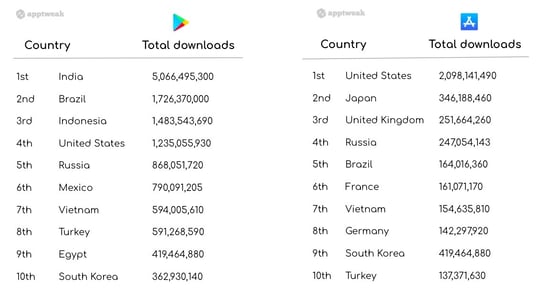
Source: AppTweak
Such countries as the United States, Brazil, Russia, Vietnam, South Korea and Turkey made it to both lists. China was excluded from the analysis as Google Play is blocked in China.
Downloads vs Revenue
While a high download rate does not always mean significant profits, large numbers of downloads help to boost rankings, which in turn generates additional organic traffic.
If you’re aiming to boost download numbers, you can localize your game into languages such as Hindi (for India), Indonesian, and Brazilian Portuguese and monetize these downloads with ads.
If you want to sell apps or in-app purchases, you should target such countries as China, the US, Japan, South Korea, Germany, and other top-tier countries (remember not to limit yourself to just the top 10).
It’s worth noting that some developers have discovered another successful strategy: targeting less popular markets (the APAC region, Arabic-speaking countries, smaller European countries).
As these markets lack content in their native languages, there’s less competition and it’s easier to achieve success. For example, mobile apps by Wachanga gained 10x growth and a number of paying users by catering to less popular markets.
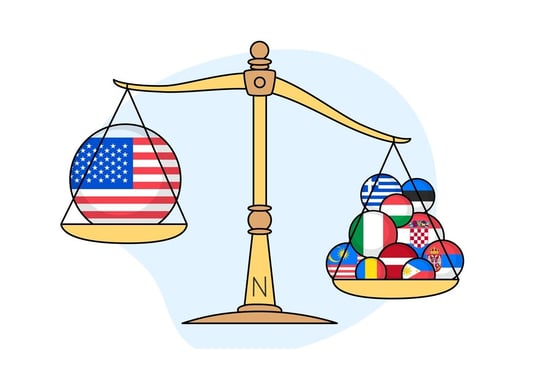
Game localization on a budget
A popular strategy for getting started with game localization on a budget is to localize screenshots, keywords, and game descriptions for app stores.
Localized screenshots will get you more stats on who is downloading your app. You may even discover a market that was off your radar! Once you have the data, you’ll see the languages into which you should fully localize your app.
One of our clients, indie studio Duck Rockets, successfully employs this approach before spending much money on game localization. By using this approach they learned that localization into Italian and Turkish was a good investment for their match 3 game.
Localizing your screenshots can have a huge impact on your download numbers, since 70% of users decide whether to download apps based on screenshots. Since screenshots contain little text, it is both quick and cheap to localize screenshots into 10-15 languages.
We suggest using our human translation platform Nitro for these small translation tasks, as Nitro charges a flat rate per word, and there's no minimum order fee. That means that text from screenshots translated into 10 languages could cost about $20.
.png?width=1000&name=10%20langs%20(from%20EN).png)
If you have a PC game, you might want to go with the 5-10 most popular languages on Steam. After English, the top languages for Steam games are:
- Simplified Chinese (18%)
- Russian (12%)
- Spanish (5.5%)
- German (4%)
- Brazilian Portuguese (3.5%).
See the full list on Steam’s language chart.
Watch out for game localization pitfalls
Selecting the right languages for localization is just the beginning. There are many challenges that you may not be aware of, but we’ve got you covered!
We’ve put together a game localization guide with 10 useful tips to help you avoid typical mistakes — check out this article to save time and money.
Finally, make sure you use native speakers for translation to provide a great user experience. At Alconost we employ native-speaking linguists exclusively. We’d love to help localize your game!
Need help with localizing your game?



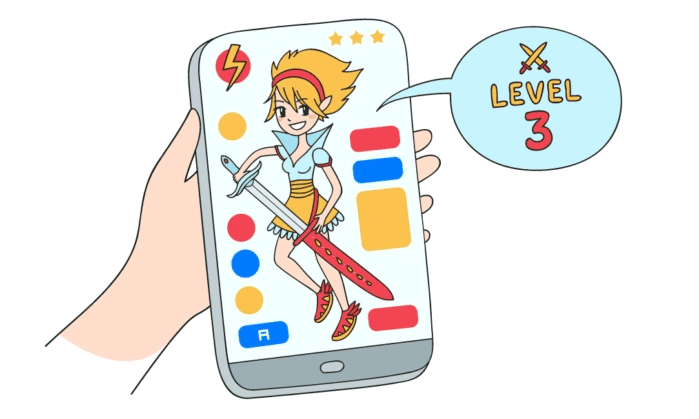




.png?width=1000&name=10%20langs%20(from%20EN).png)

